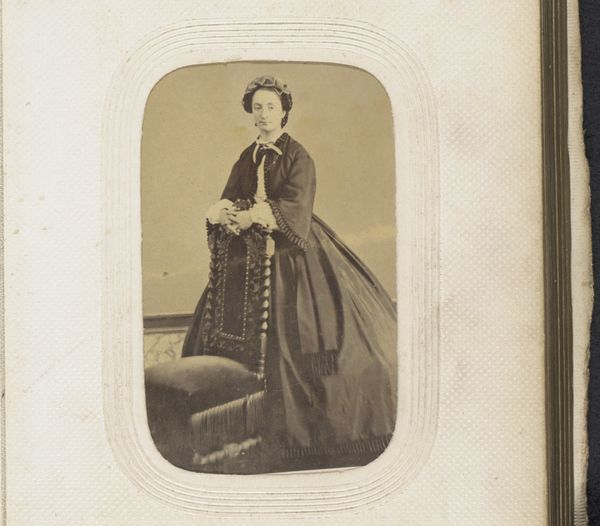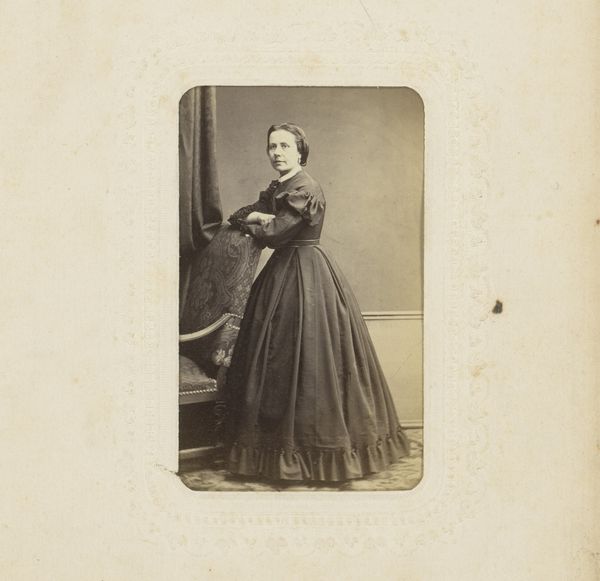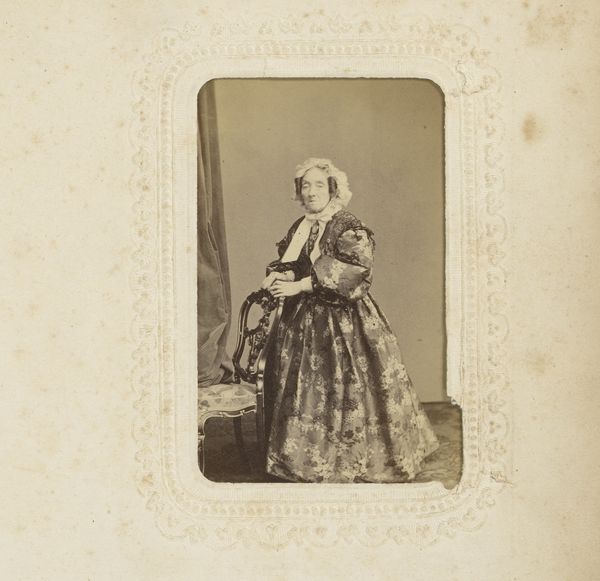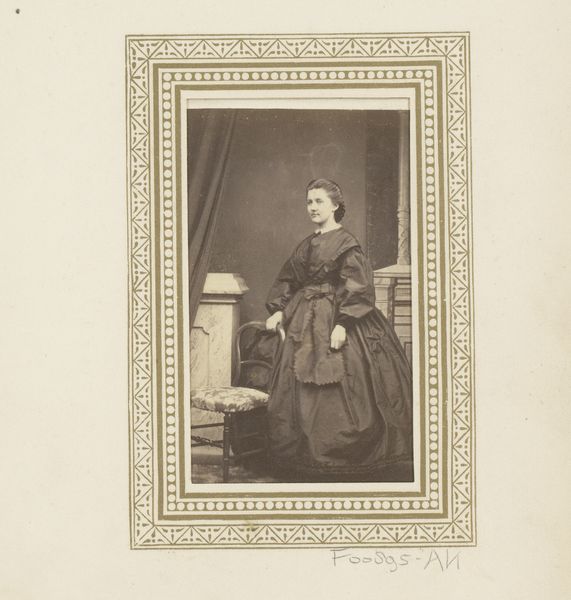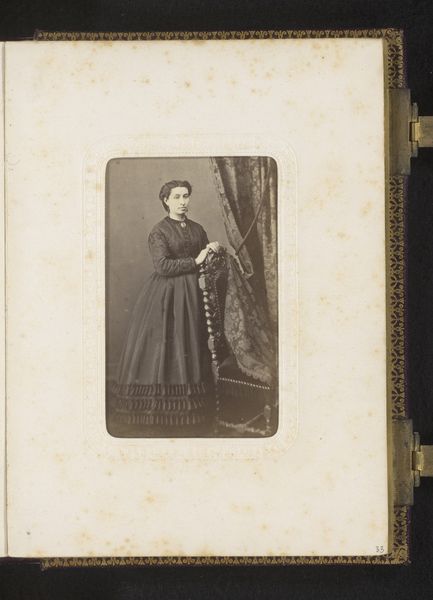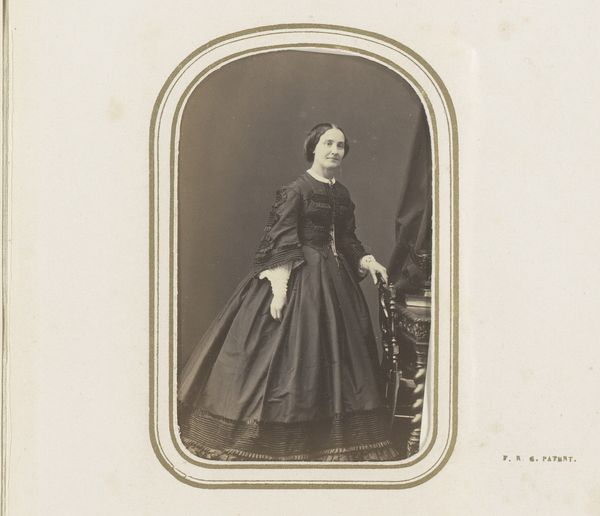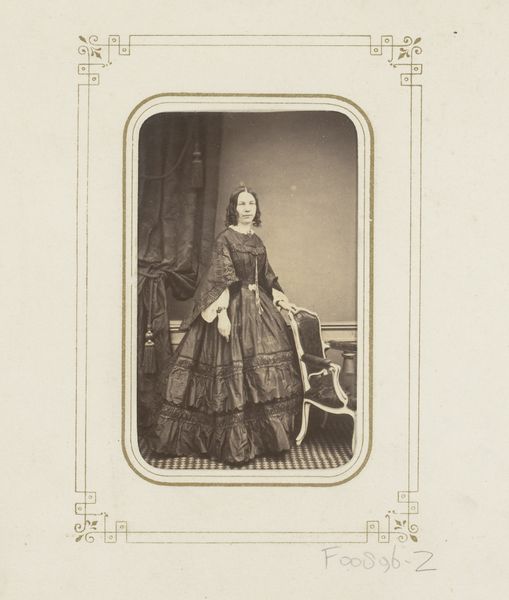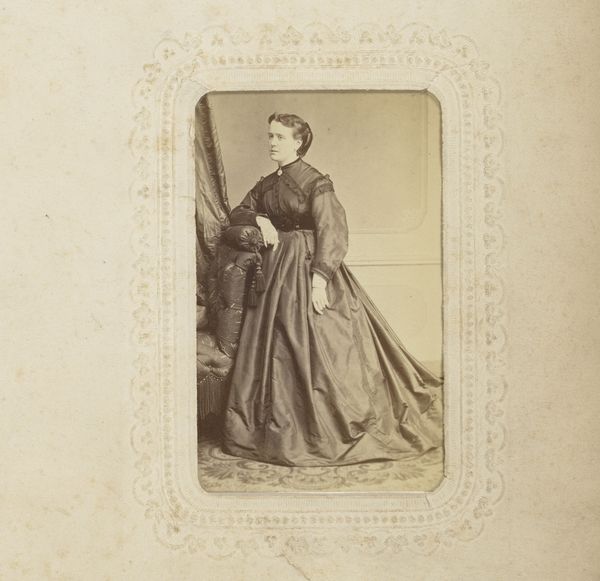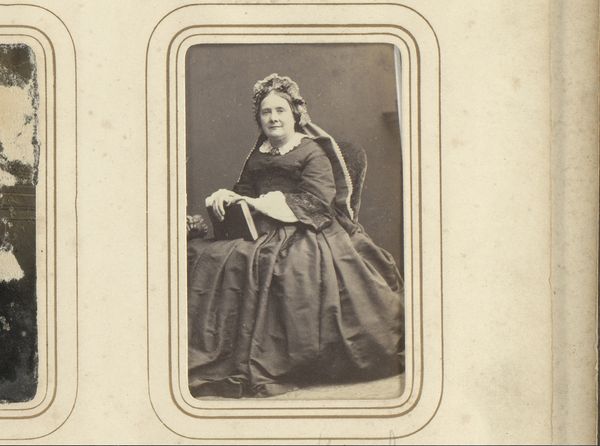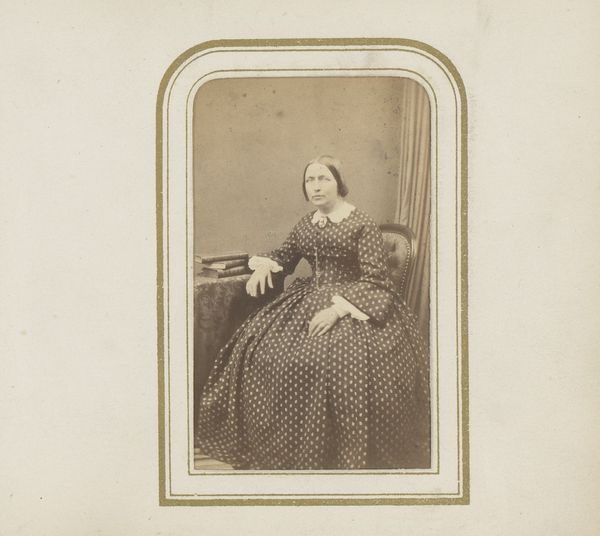
Dimensions: height 83 mm, width 51 mm
Copyright: Rijks Museum: Open Domain
Curator: Looking at this photograph, this portrait, it's impossible not to get a sense of an entire era collapsing into a single image, you know? It’s credited to Ghémar Frères, placing its creation somewhere between 1860 and 1894. And it just... exuded something profound, no? Editor: Profound sadness, perhaps? I mean, her posture is upright, yet there's such a heavy stillness. Almost like a carefully staged performance of bourgeois respectability, masking untold stories. Curator: Right! The controlled presentation… but the dark tones fight with that attempt at decorum. This romantic painting style, frozen in a photographic print—there’s an anxiety there, somewhere. Look at the edges—there’s this delicate ornamentation, but is that supposed to contain something wilder inside, or just prettify the edges of some dark stuff? Editor: Absolutely. Consider the implications of 19th-century photography—this portrait wasn't just an image, it was a carefully constructed representation of identity, deeply entwined with social expectations. The dress alone, that immense crinoline skirt, speaks of confinement, restriction... Curator: Almost a cage… The light doesn't so much illuminate as trap her within it. And there's such a beautiful formality to the whole composition, from her coiffure to that draped curtain… I keep wondering, what would she whisper to me if this image could come alive? Editor: I think her silence is the point, isn't it? The societal pressures silenced so many women, contained them within these performative roles. This portrait, even with its aesthetic charm, embodies a form of cultural subjugation. It serves to remind of women's fight for recognition and visibility, beyond just visual presence. Curator: Maybe art's greatest power is in creating not just what is visible, but what the invisible spaces *feel* like. This portrait is almost unbearably successful there… Editor: Indeed. In these ghostly outlines of an era gone by we’re seeing echoes that still resonate with identity, visibility, and voice, today.
Comments
No comments
Be the first to comment and join the conversation on the ultimate creative platform.
